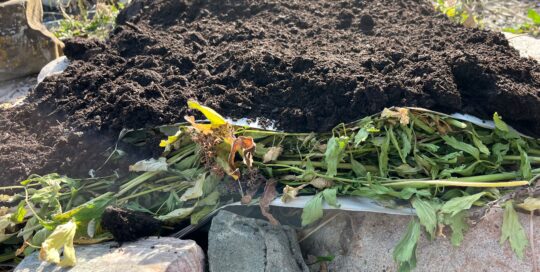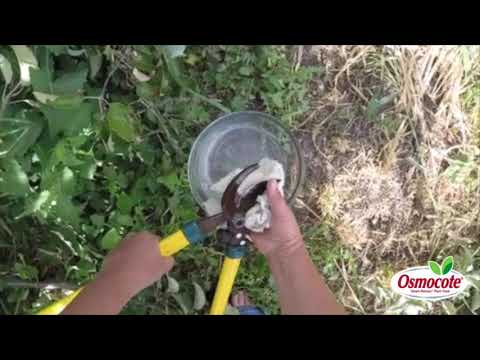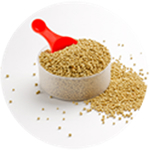How Does a Late Snowstorm Affect the Garden?
Views: 301
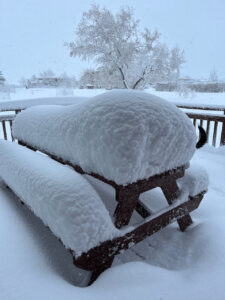
While I typically talk about what to do about pests, today I am bemoaning the 427th day of winter. Yes, it’s leaning towards the end of April, but we have over a foot of snow with more falling. This is a new experience for many people (except those who’ve lived in Montana for decades) so I thought I’d share how late snowstorms affect the garden.
How to Remove Snow from Trees and Other Plants
We Have to Love the Moisture
This is what we tell ourselves so we don’t go to dark places. But seriously, living in a semi arid region of the country, we are grateful for every drop of rain, even when it’s snow. As of approximately 6 AM this morning, the National Weather Service reported .83 inches of precipitation. Of course, this is very fluffy precipitation that is causing all sorts of problems on the road. But with an annual rainfall amount totaling around 14 inches, every bit counts.
The good news is it will cause exponential growth for perennials and reseeded plants once it melts. I seeded a prairie flower mix and transplanted native asters to a back corner of the yard the other day, which is out of reach of the hoses. A snow like this will inspire rapid growth.
A Late Snowstorm Makes Weeding Easier
There have been plenty of April’s, where I needed to turn on the sprinkler by the middle of the month because the soil was so dry. This is not one of those years. And with this added snowfall, if I can get in the garden shortly after it melts, it’s going to make weeding considerably easier.
This will probably be helpful on my goal of digging out errant lilacs, and golden currents that are crowding the fence. Truthfully, digging those is not going to be an easy project anyway I look at it, but at least I won’t have to battle soil the consistency of concrete.
Late Snowstorms Don’t Hurt Greening Plants
Spring is slow this year — only my crocuses are blooming – but other than mashing down leaves and maybe bending stems, a snow like this won’t hurt what is already emerging. Daffodils are maybe four inches tall, but they’ll be fine. It’s the same with the greening poppies and peonies finally poking through the soil.
Thwarting Seeding
The bad news is I prepared one of my new raised beds last weekend, but decided to wait until Thursday to follow the Farmers’ Almanac’s recommendation of planting crops with the new moon. Unless it warms up in short order, it looks like I’ll have to look for my next best planting date. So the first thing a spring snowstorm does is push off early planting. Granted, this isn’t the end of the world, but every gardener knows what it’s like to want to put something int he ground.
Branch Damage From a Late Snowstorm
One positive aspect of a cold spring is the trees are not leafed out at all. Yesterday when I took a walk along the river I noticed a couple of golden currants barely showing some green, but nothing in our yard, yet. This is good because leaf laden branches are more likely to hold the weight of the snow causing them to break. While I can see losing a few weakened branches throughout the area, it’s going to be minimal considering the heavy nature of the snow.
How to Prevent Ice and Snow Damage
In the case of breaking branches, the best thing to do is remove them completely, even if it requires a saw so it doesn’t damage more bark. A heavy snow like this is a good opportunity to see where trees or shrubs are weak.
In truth, a storm like this is harder psychologically rather than physically on the trees or plants. By this time in the spring we want to be outside, but Mother Nature reminds us that we’ll do our projects on her time. So I will gather my seeds and simply wait for a nicer day.
Meet Amy Grisak
Amy is a freelance author and photographer in Great Falls, MT who specializes in gardening, foods, and sustainable agriculture. She provides information on every kind…
Amy's Recent Posts
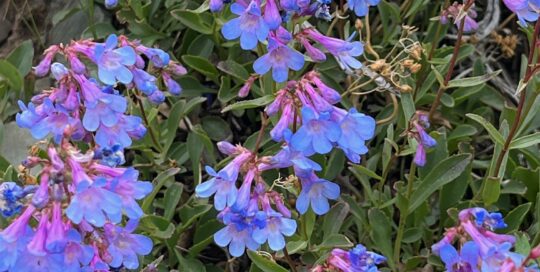
Watch for Fungal Diseases on Penstemon
